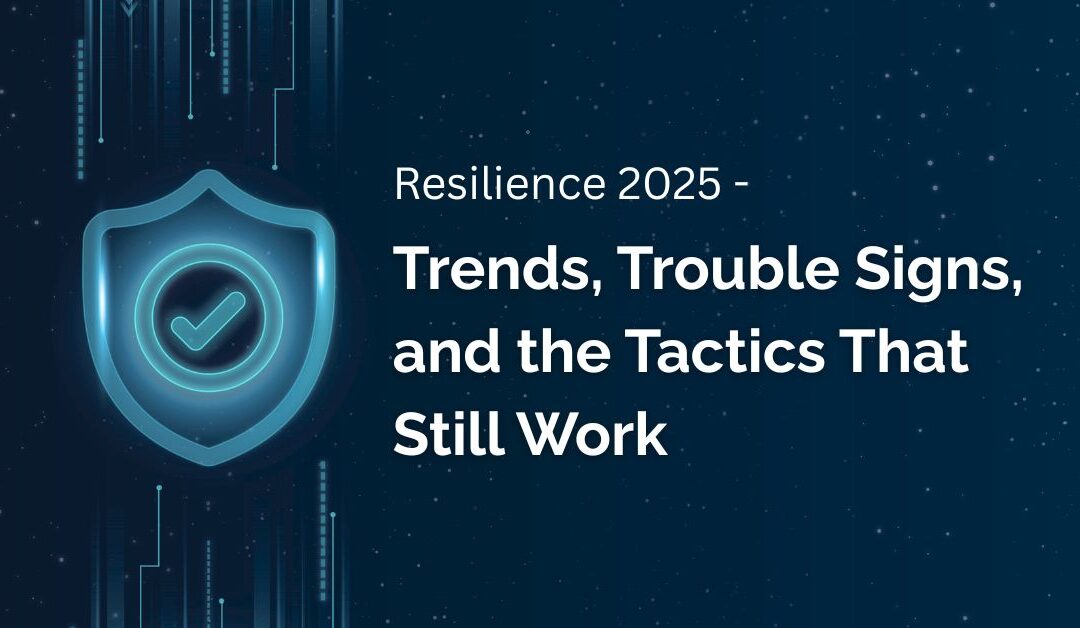This week, we’re kicking off a 4-part series that moves beyond theory and into the real-world pressure points businesses face right now.
We’ll cover:
- What’s trending (and what’s not worth your time)
- What’s causing the most disruption
- What practical moves are still making a difference
Let’s get clear on the landscape—so you can act with intention.
1. Trends That Matter (And Those That Don’t)
What’s Hot:
- Business Email Compromise (BEC) is on the rise—again. Not just phishing, but high-level social engineering that bypasses technical controls.
- Supplier risk is under sharper scrutiny. You’re being asked what your vendors are doing.
- Cyber insurance questionnaires are becoming more detailed—and more dangerous if you answer them incorrectly.
- Resilience maturity models are catching on, but many SMBs still confuse them with paperwork exercises.
What’s Losing Steam:
- The “just get cyber insurance” approach. Underwriters are denying claims or slashing payouts unless there’s evidence of control.
- Tool fatigue. Businesses are ditching platforms that don’t clearly reduce risk or add clarity.
2. The Top 3 Trouble Signs We’re Seeing
If you see these in your environment, it’s time to act:
- No documented fallback processes.
If your key systems go down, does anyone know what to actually do? - Shared credentials and ad hoc admin rights.
Still common. Still dangerous. - Outdated incident response plans.
You ran a drill in 2021—but haven’t touched it since? You’re not ready.
3. What’s Still Working (Even in Complex Environments)
– Lightweight, fast-cycle assessments.
Not the 100-question audit. Just a clear review of:
– Top systems
– Who relies on them
– Where things break
– What’s recoverable and what’s not
– Tabletop drills.
Especially ones that are short, focused, and repeatable. No theatrical scenarios—just real response clarity.
– Business-first risk scoring.
Skip the technical jargon. Red, Yellow, Green. What’s at risk to the business?
What is the Action to Take?
This isn’t about doing everything.
It’s about doing what moves the needle first.
– If you’re not sure where to begin, start with the risk assessment we offer.
It’s business-focused. Fast. Objective. And it helps you see what’s working—and what isn’t.
Let’s have a discussion
And stay tuned.
Next week, we’ll cover “What resilience maturity looks like at different stages of growth.”





